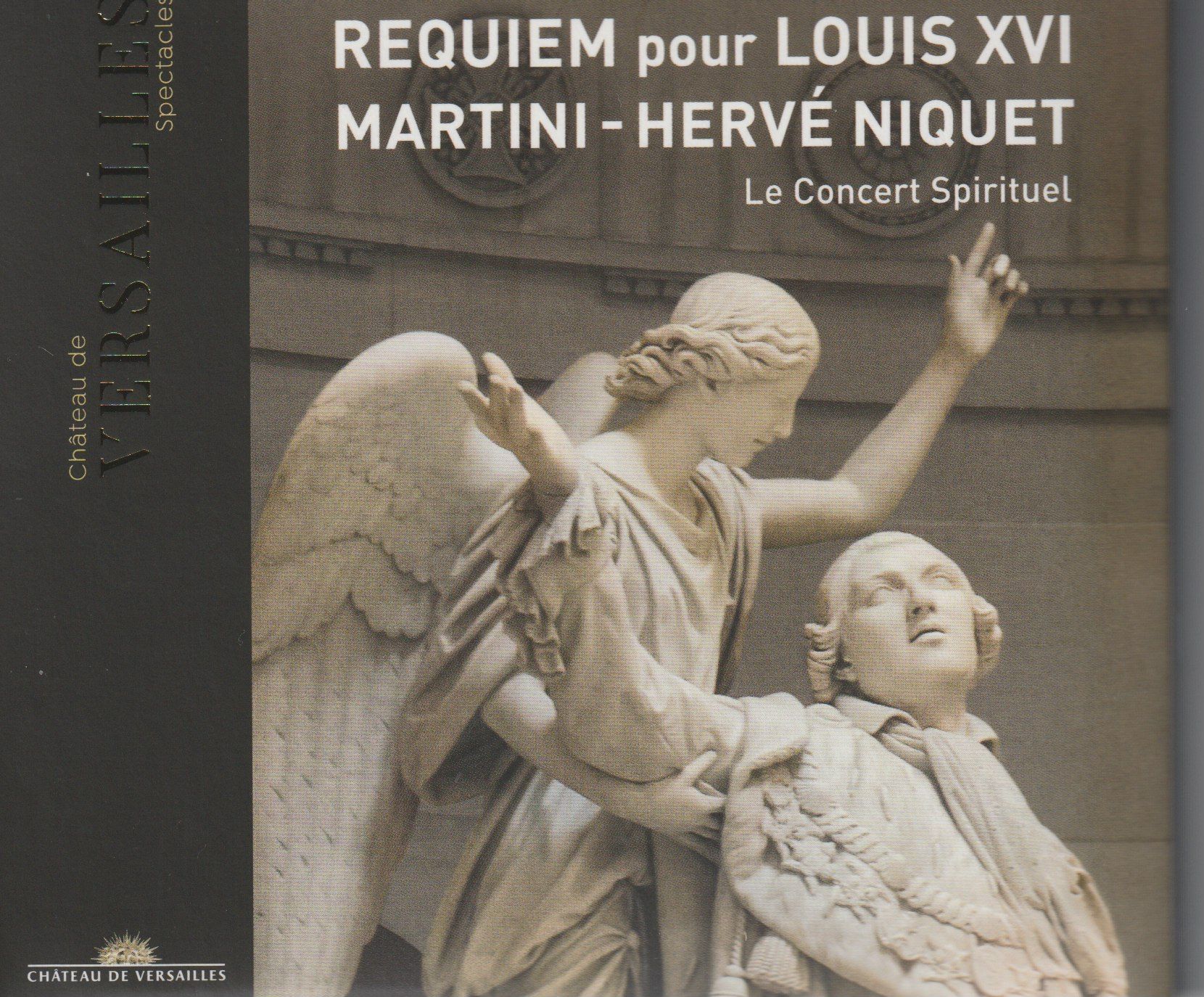Requiem pour Louis XVI: Martini
It seems pretty much everything Niquet touches turns to gold ...

Jean-Paul-Égide Martini (1741-1816) was born in Freystadt (Bavaria); he moved to in Nancy in 1760. In 1787 he became affiliated to the Concerts de la Reine. In 1788 he was to become surintendant de la musique du roi, a post he was only able to take up after the French Revolution..
After the Revolution, with the monarchy restored, Martini was appointed in the position he was unable to take 25 years before.
From onwards every year a Requiem for Louis XVI was to be performed. Martini's ‘Requiem Mass for large orchestra dedicated to the souls of the most famous composers’ of 1811 was performed at Saint-Denis in Paris in January 1815; it was Martini’s last completed work. There are three solo voices (soprano, tenor and bass), plus choir and full orchestra. The Requiem text is set except for the “Libera me” and “In Paradisium”; instead, Martini adds two inserts: “Elevatione” and “Noli meminisse,” from the Apocrypha (specifically, the Book of Baruch).
Martini's large orchestra includes tam-tam (which we are certainly aware of in the dramatic opening “Requiem aeternam”) and serpent.
Worth noting the beauty of Adreana Gonzalez' contribution to the opening “Requiem æternam,” her lines imbued with a lamenting serenity reflecting and balancing the choir’s drooping, descending lines. Niquet's shaping of the fugue that opens the “Kyrie” is glorious; the power of the “Dies irae” is only matched by its clarity. The venue for the recording is Versailles’ Chapelle Royale; it is a measure of the success of the recording that we feel that wonderful acoustic and yet there is little or no muddying. The choir of Le Concert Spirituel is one of the finest around; Niquet has trained them perfectly, as we hear in the magnificent (but short: 3”05) “Rex tremendae majestatis”.
Niquet’s soloists are perfectly chosen, too: listen to how well Adriana Gonazlez’ and tenor Julien Behr’s voices match in the “Ingemisco”.
The “Liber scriptus” is a movement with horn obbligato (Piere-Yves Madeuf) and bass soloist (Andreas Wolf, who we have met on two occasions, the first very recently indeed in the stunning cpo recording of the Passion Oratorios of Heinichen, plus he sings in the Passacaille recording of C. P. E. Bach's Aufstieg und Himmelfahrt Jesu). Madeuf is a master of his instrument, so eloquent in the opening section prior to the entrnce of the voice and demonstrating a terrific lip trill later (echoes by Wolf's equally impressive vocal trill).
The piece is remarkable, and hearing it on original instruments only increases its power: there is no softening for the amazing instrumental sonorities that open the “Agnus Dei”. A final “Amen,” delighting in firm and rigorous counterpoint, concludes this amzaing piece:
There is a programmed encore (actually marked as “Bis”: Bis d’après la Marseillaise d'Hector Berlioz, 1830) with the tenor soloist Julien Behr. Berlioz's setting is certainly rousing!
I am surprised, I have to say, about the booklet. Good to have full texts and translation, of course, but the notes on the music itself are remarkably brief and perfunctory: one short page on the piece itself and the same on the composer, against six pages of advertising at the back. But the music is what counts, and this is a phenomenal performance: it seems pretty much everything Niquet touches turns to gold.
Martini Requiem Niquet